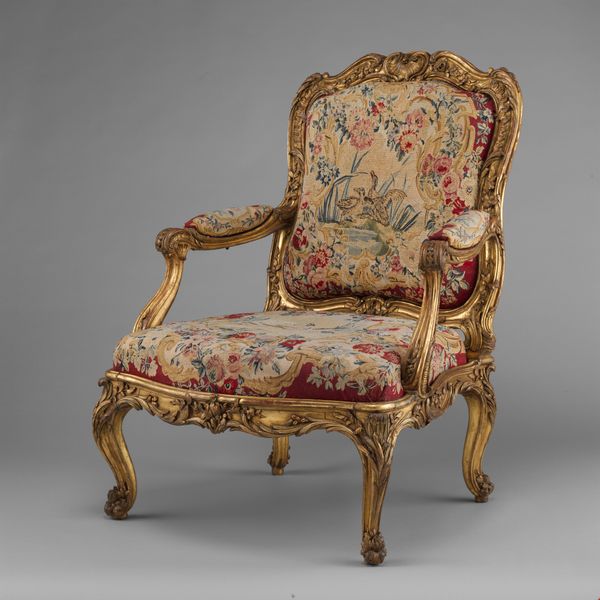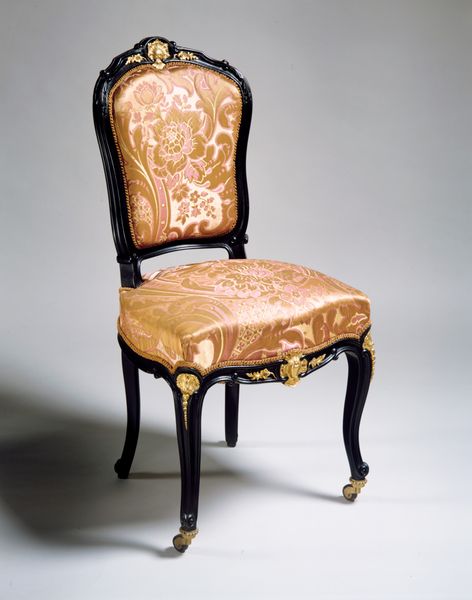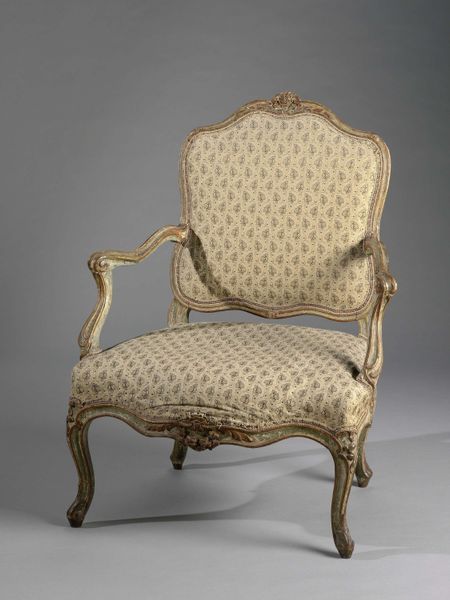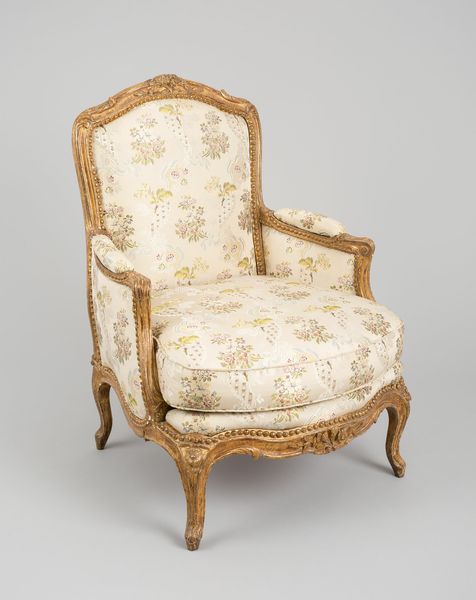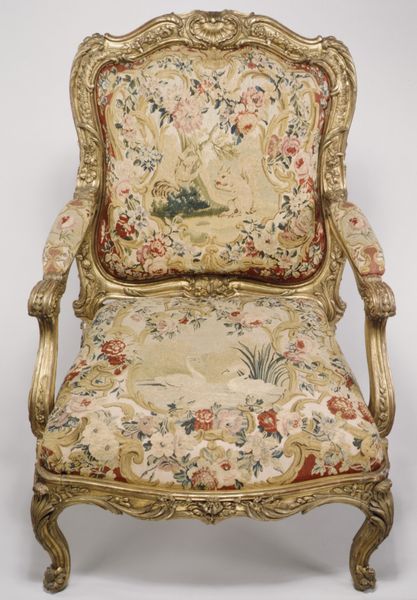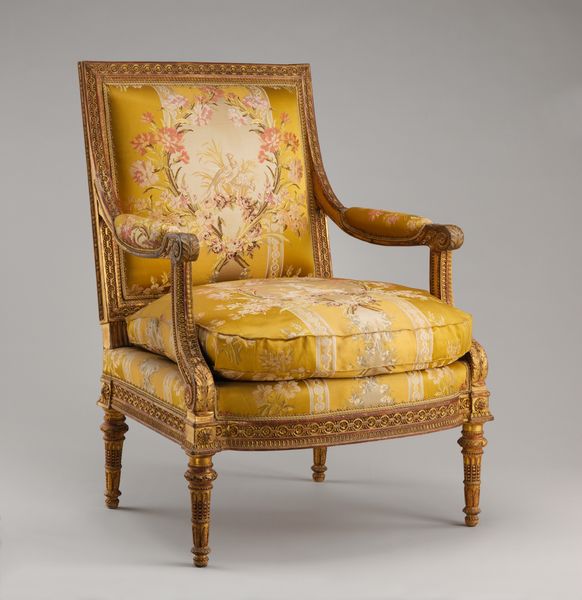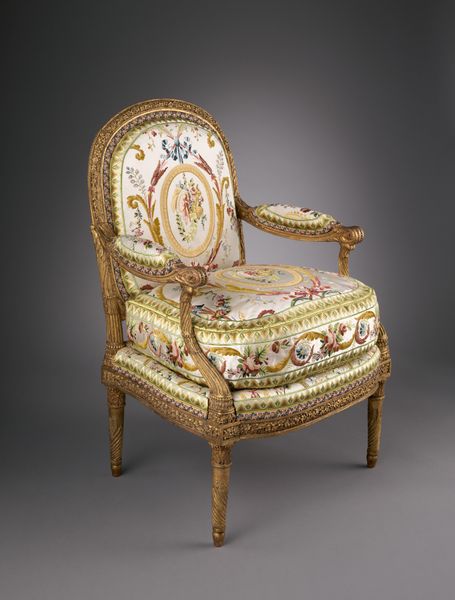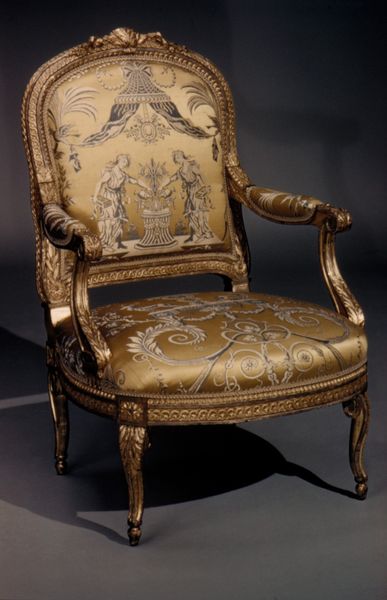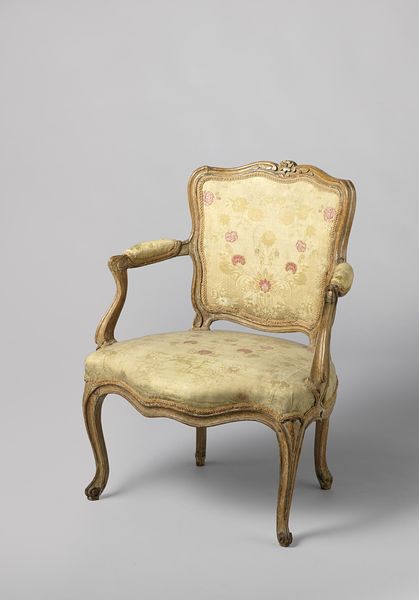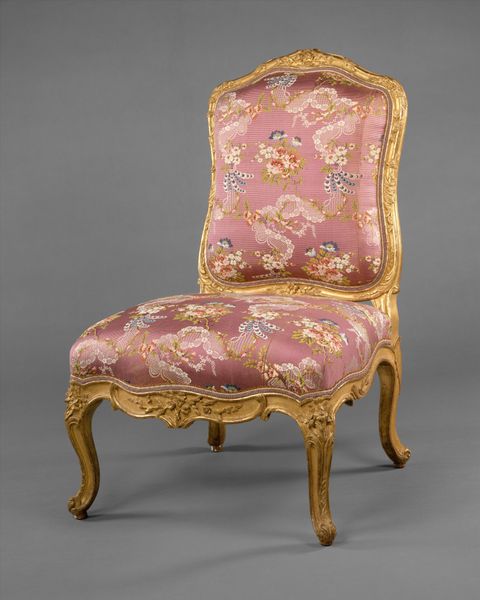
carving, textile, sculpture, wood
#
carving
#
sculpture
#
furniture
#
textile
#
sculpture
#
wood
#
decorative-art
#
rococo
Dimensions: H. 34 x W. 35 in. (approx.) (86.4 x 88.9 cm)
Copyright: Public Domain
Curator: This splendid armchair seat, made between 1754 and 1756, comes to us from the workshops of Beauvais. It’s an exquisite example of Rococo decorative art, blending carved wood with rich textile work. Editor: The overwhelming impression is one of opulent indulgence. The gilded frame seems to writhe with carved detail, framing a pastoral tapestry. It's almost cloying, but undeniably masterful. Curator: The tapestry itself tells a story. The scenes woven into the fabric—shepherds, flowers, delicate landscapes—evoke a sense of pastoral leisure, an idealized vision of country life much in vogue among the French aristocracy at the time. These motifs were deeply embedded in aristocratic escapism. Editor: Absolutely, the motifs carry significant symbolic weight. The flowers represent transient beauty, while the shepherds and shepherdesses, ubiquitous in Rococo art, reference innocence and a nostalgic longing for a simpler past. Even then they are referencing simpler pasts with their present as that previous 'simpler past' to future people. The fact they are printed onto what appears to be linen lends to it an interesting domestic association for me, however the material wealth and luxury on display certainly separates its purpose as more than domestic and humble Curator: Indeed. Think about where such a chair would have been placed: in a grand salon, perhaps, serving as a focal point for social gatherings, displaying wealth and refined taste. The textile manufactories, especially Beauvais and Gobelins, held a significant economic and political role during this period in France, and items of such decorative quality made its manufacturers the talk of Paris, and by extension, the wider fashionable world. Editor: Its exaggerated curves and organic ornamentation speak to a desire for visual pleasure and sensory delight. The overall image makes me wonder who would actually use the item beyond simple display as something almost holy. There is that element that brings that sense of visual symbolism to play and I enjoy that kind of conceptual reflection from everyday things Curator: Certainly, this piece invites us to consider the relationship between art, craftsmanship, and social status. The materials, design, and execution speak volumes about the cultural values and power structures of 18th-century France. Editor: A truly opulent statement, reflecting not just the beauty of the time but also the inherent social narratives embedded within its fibers. The artwork provides a lens through which we are permitted to analyze the history of taste as an art form.
Comments
No comments
Be the first to comment and join the conversation on the ultimate creative platform.
